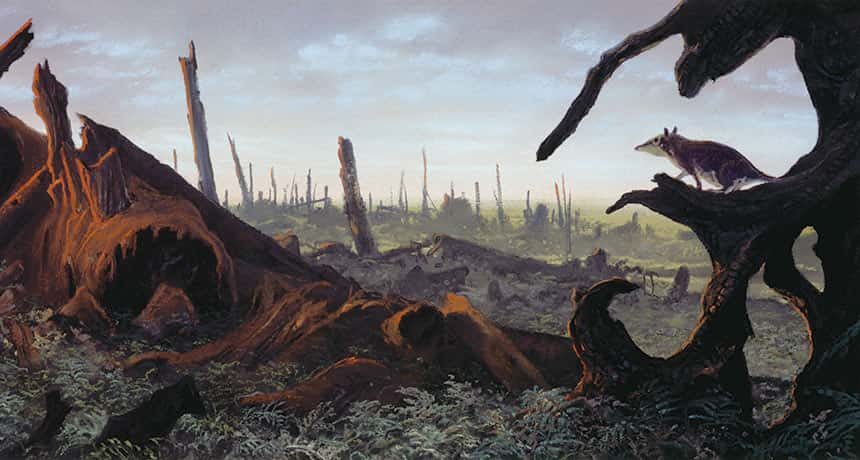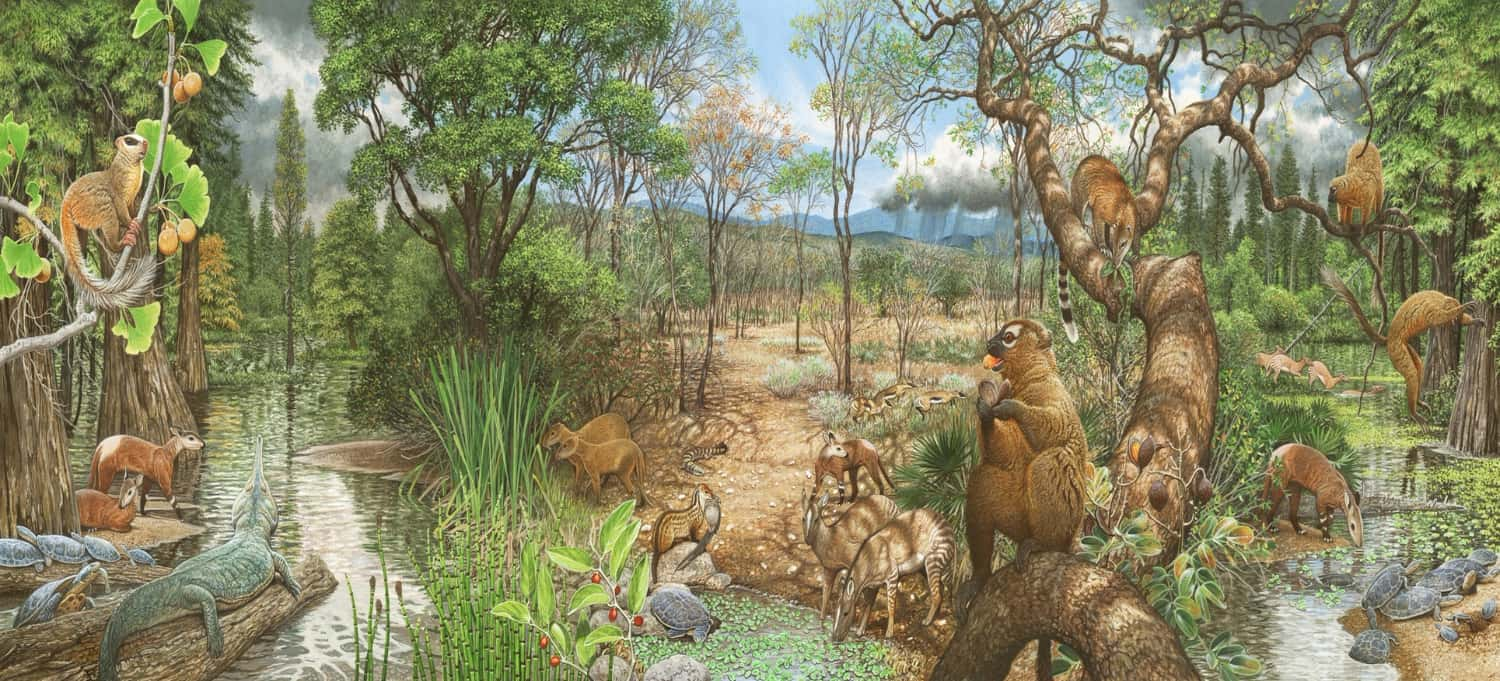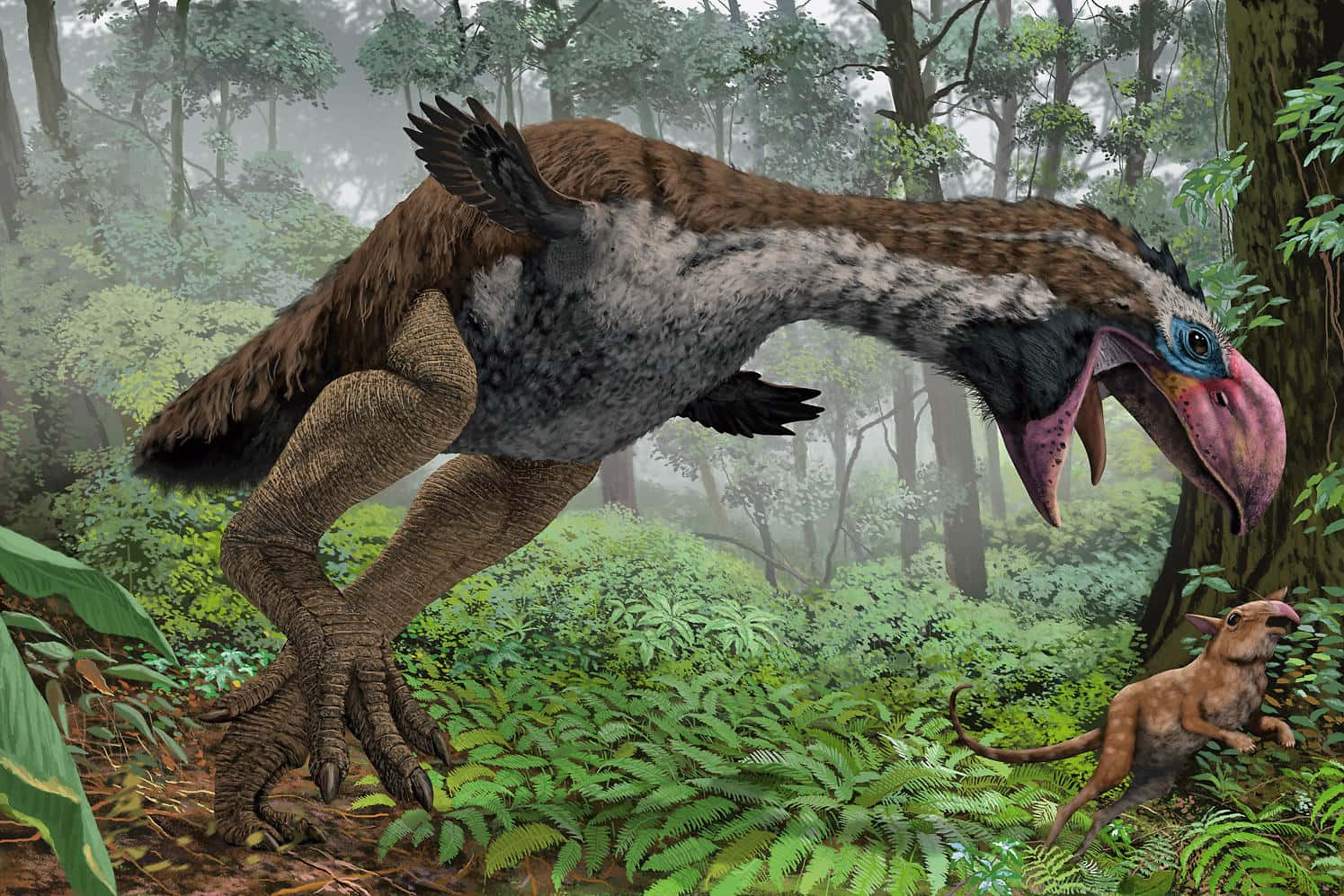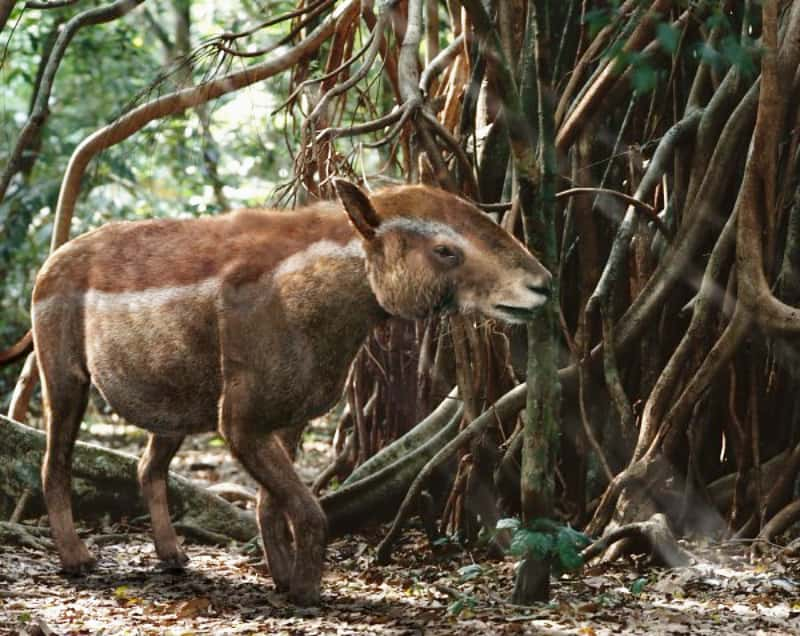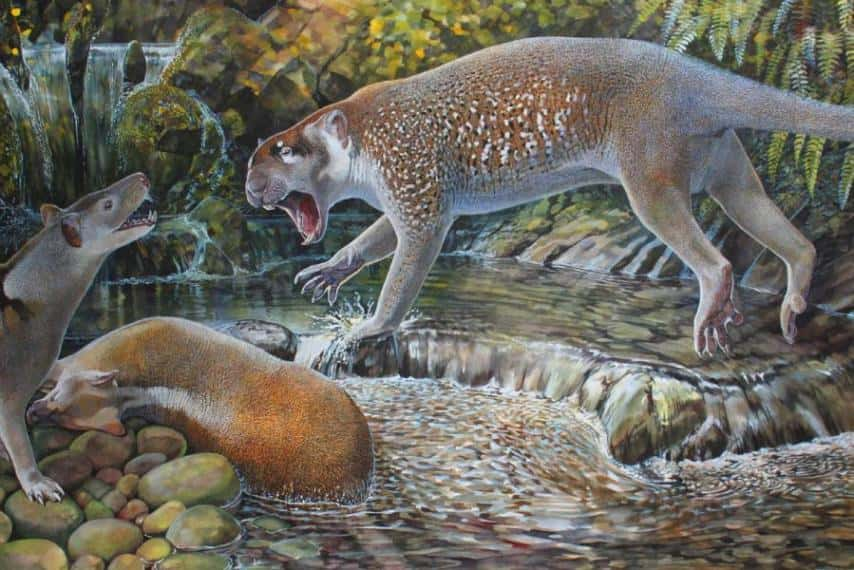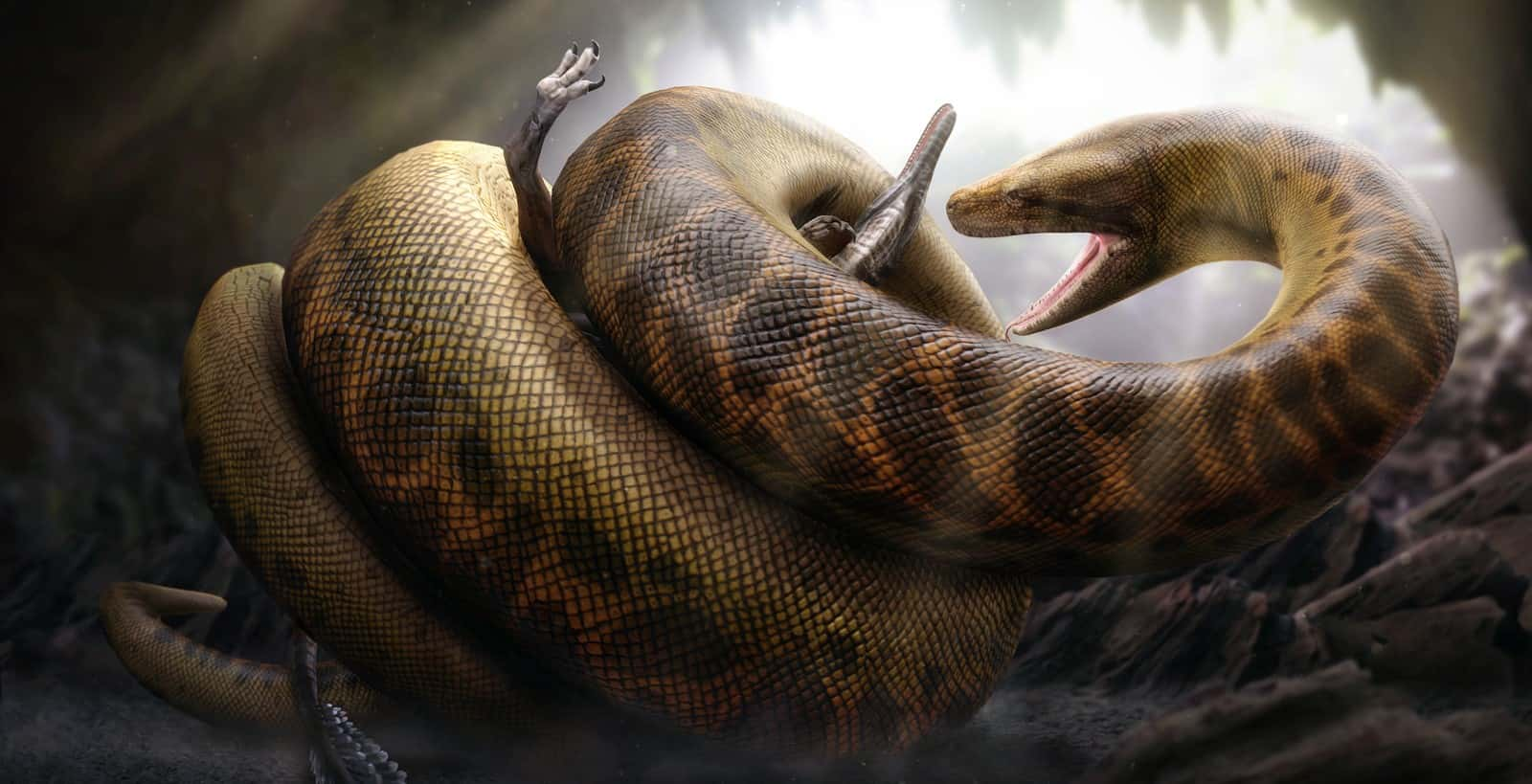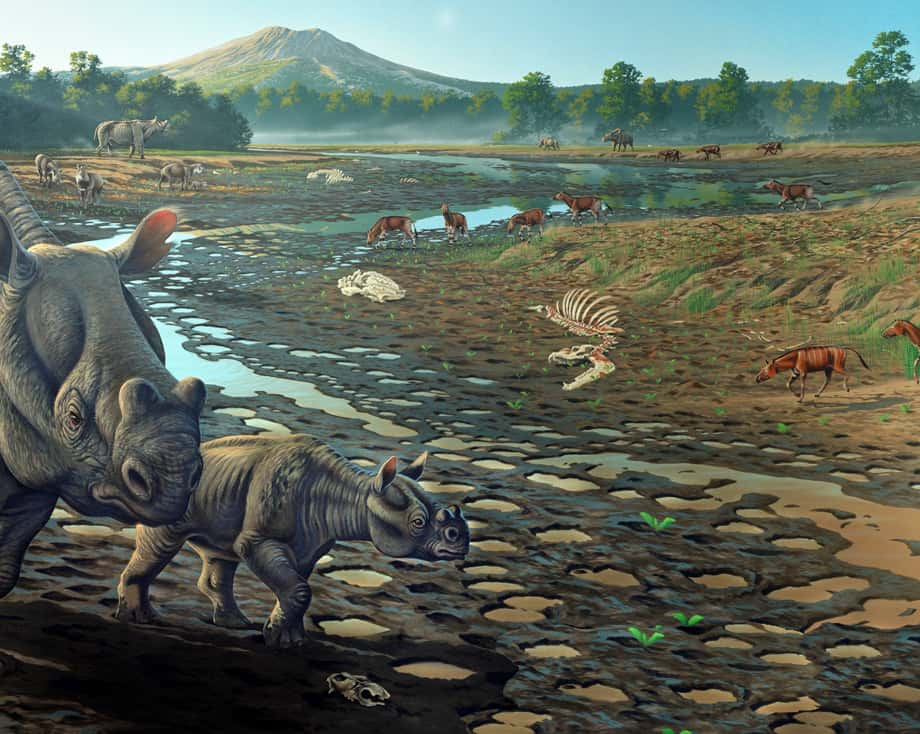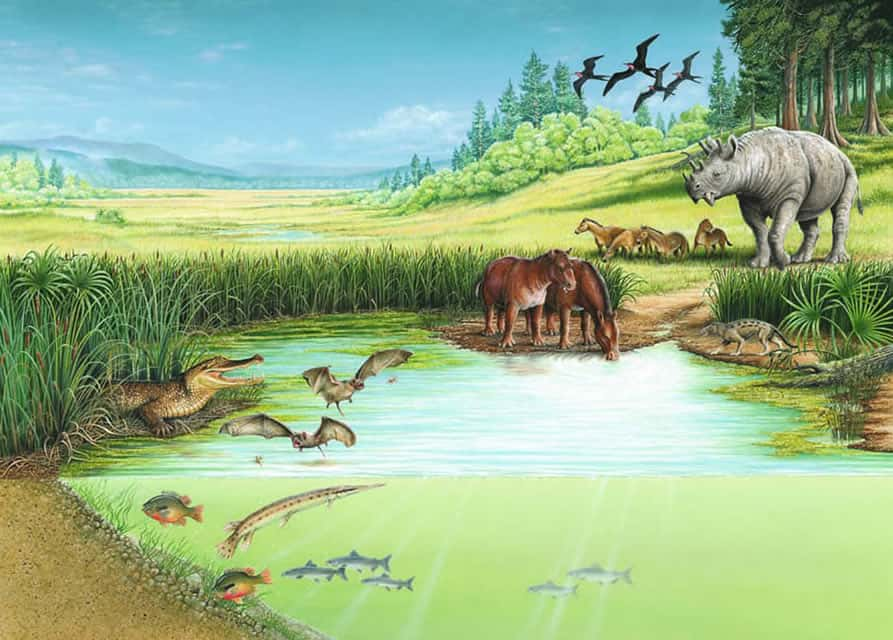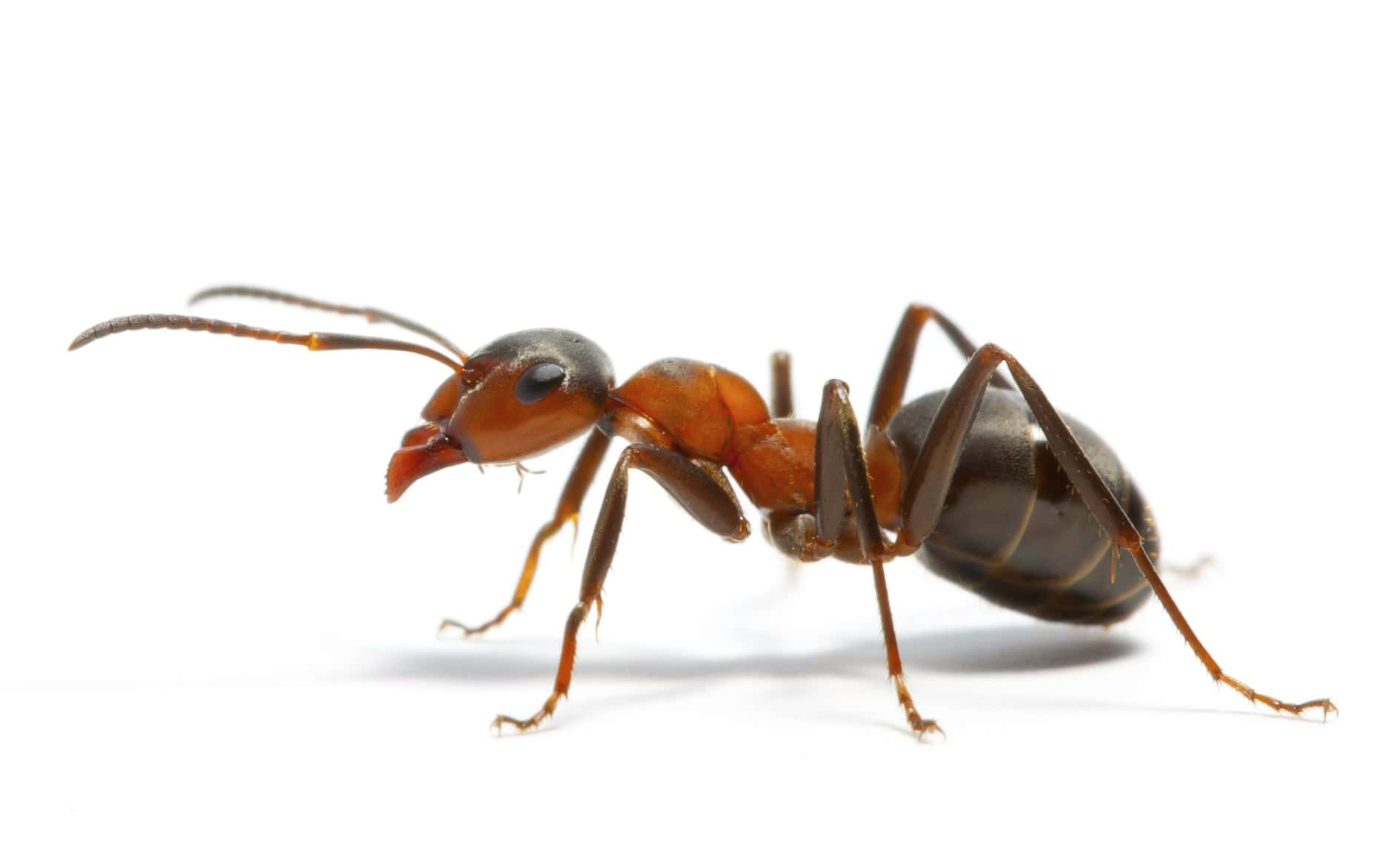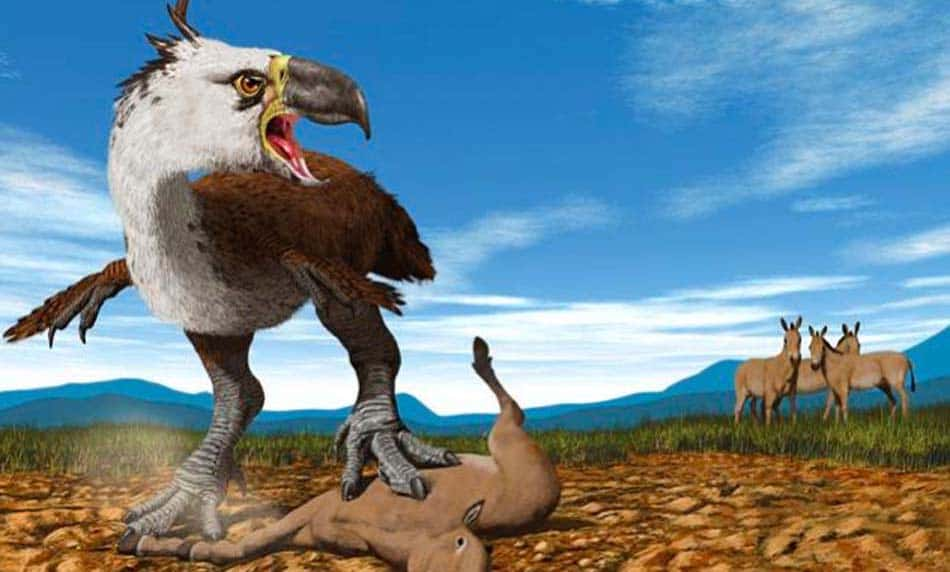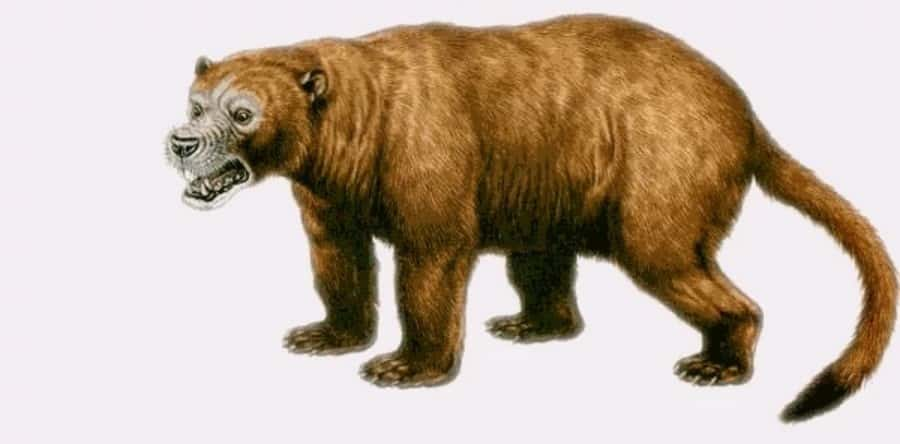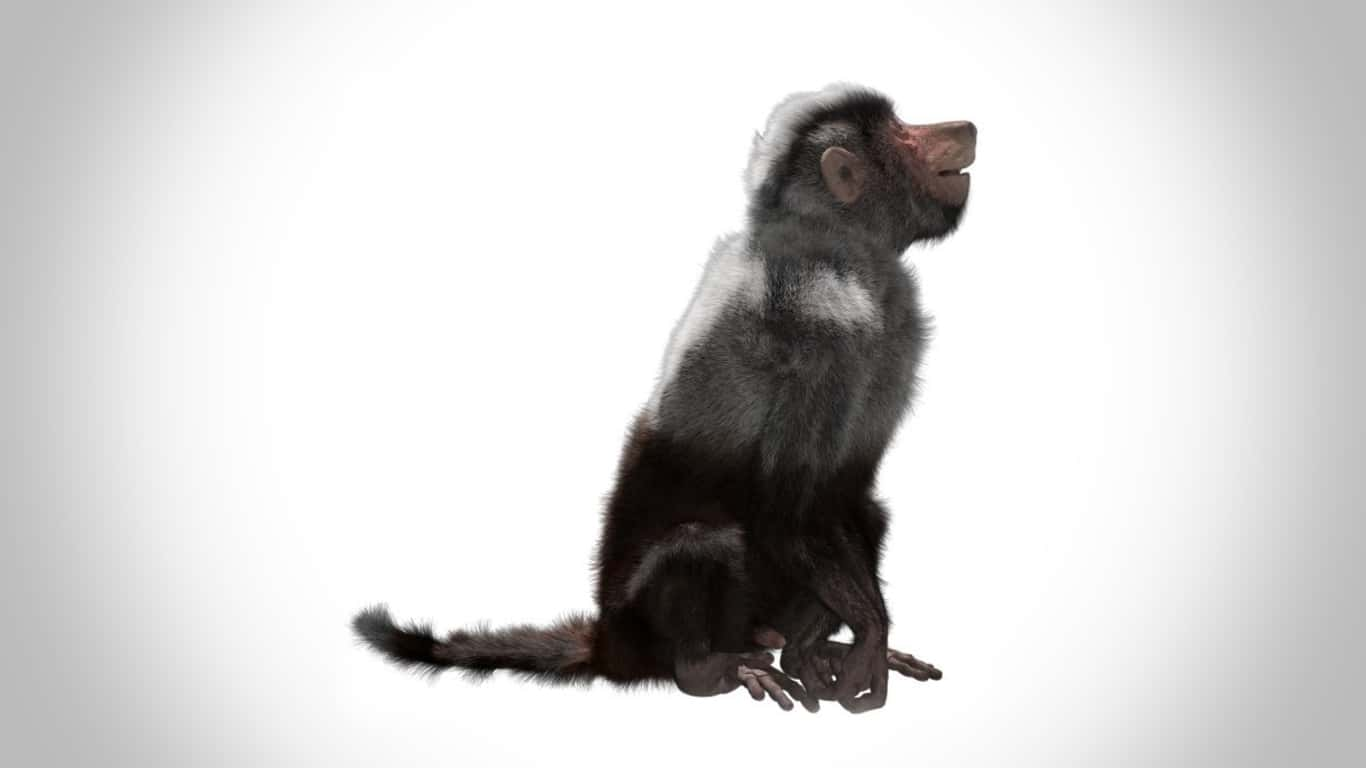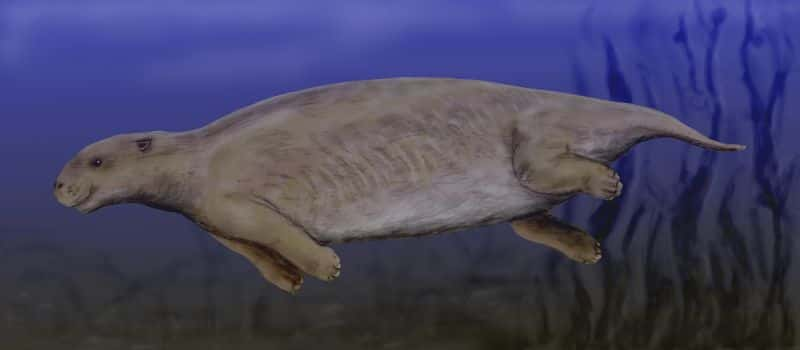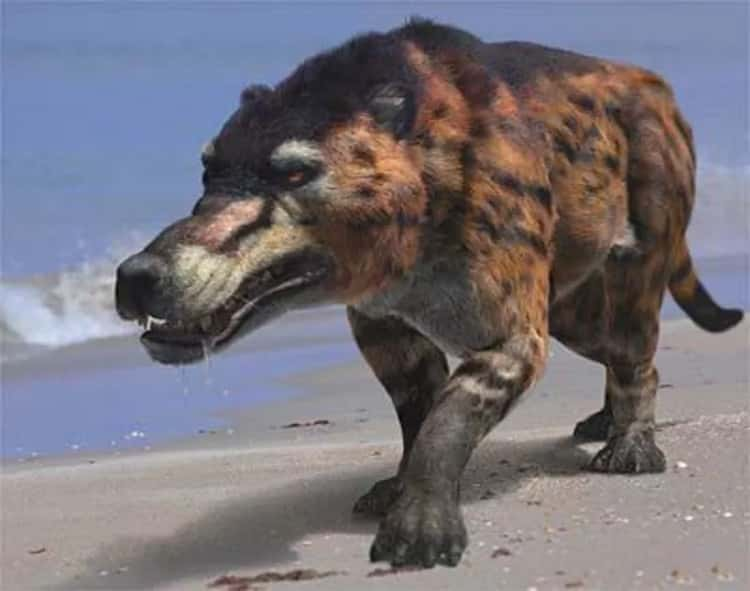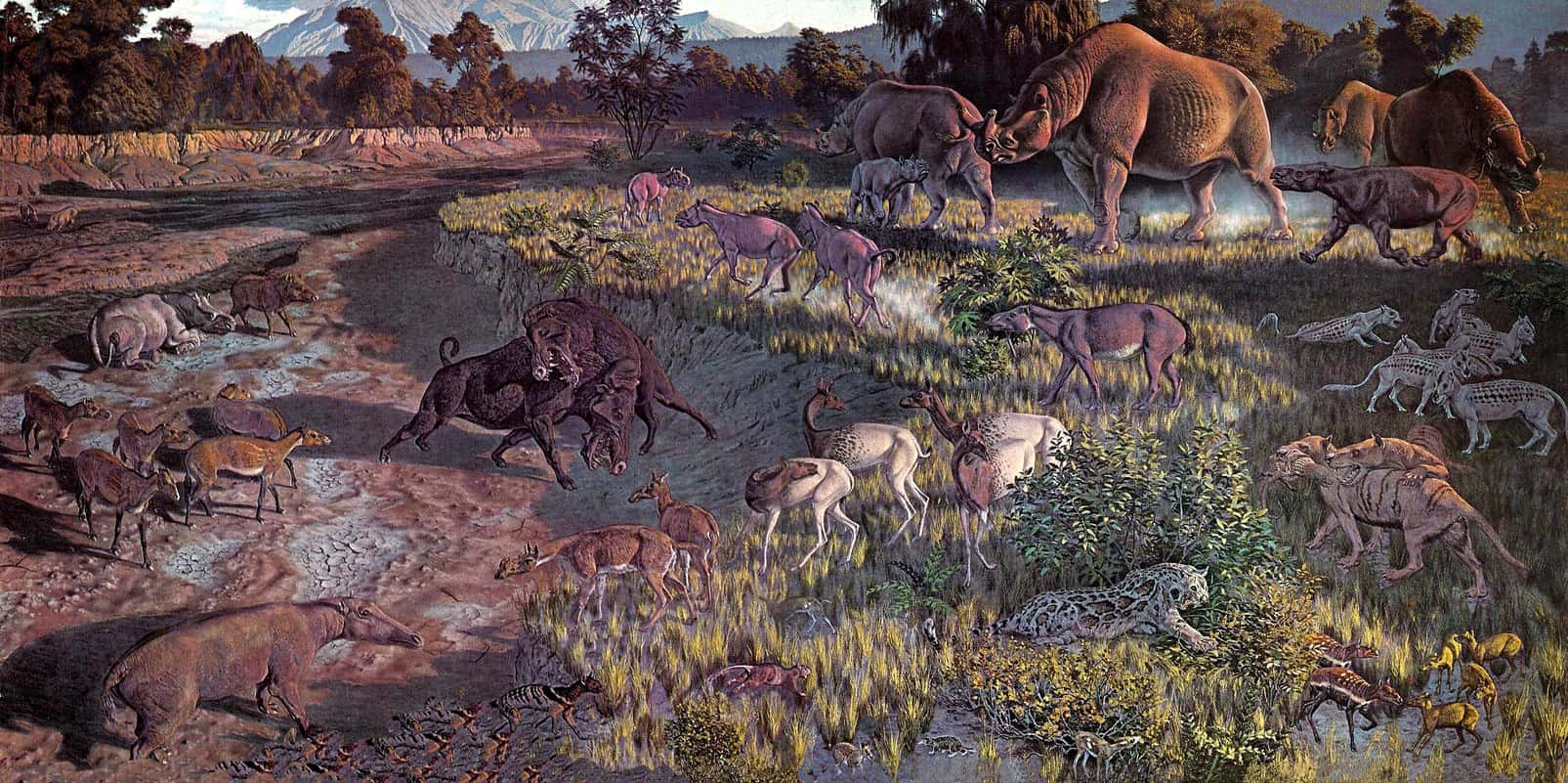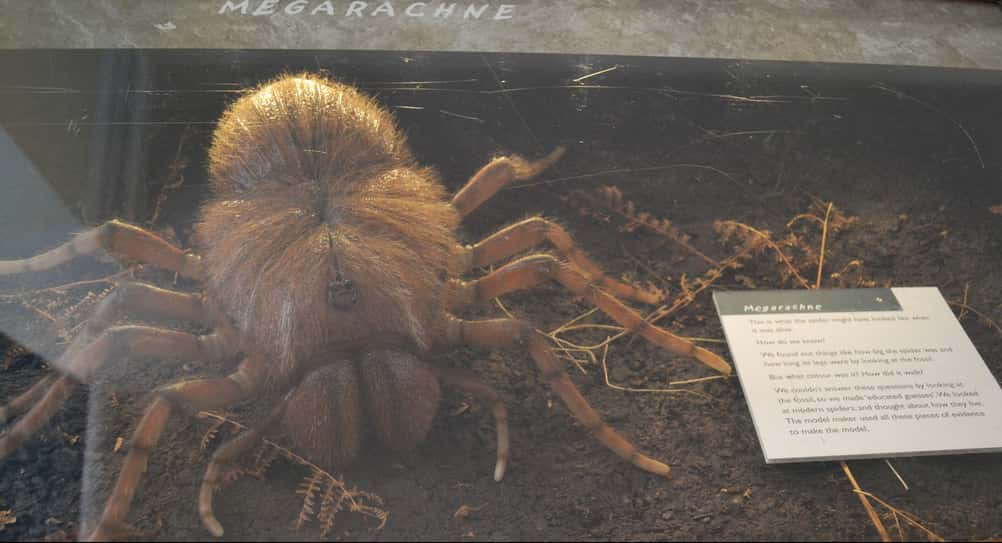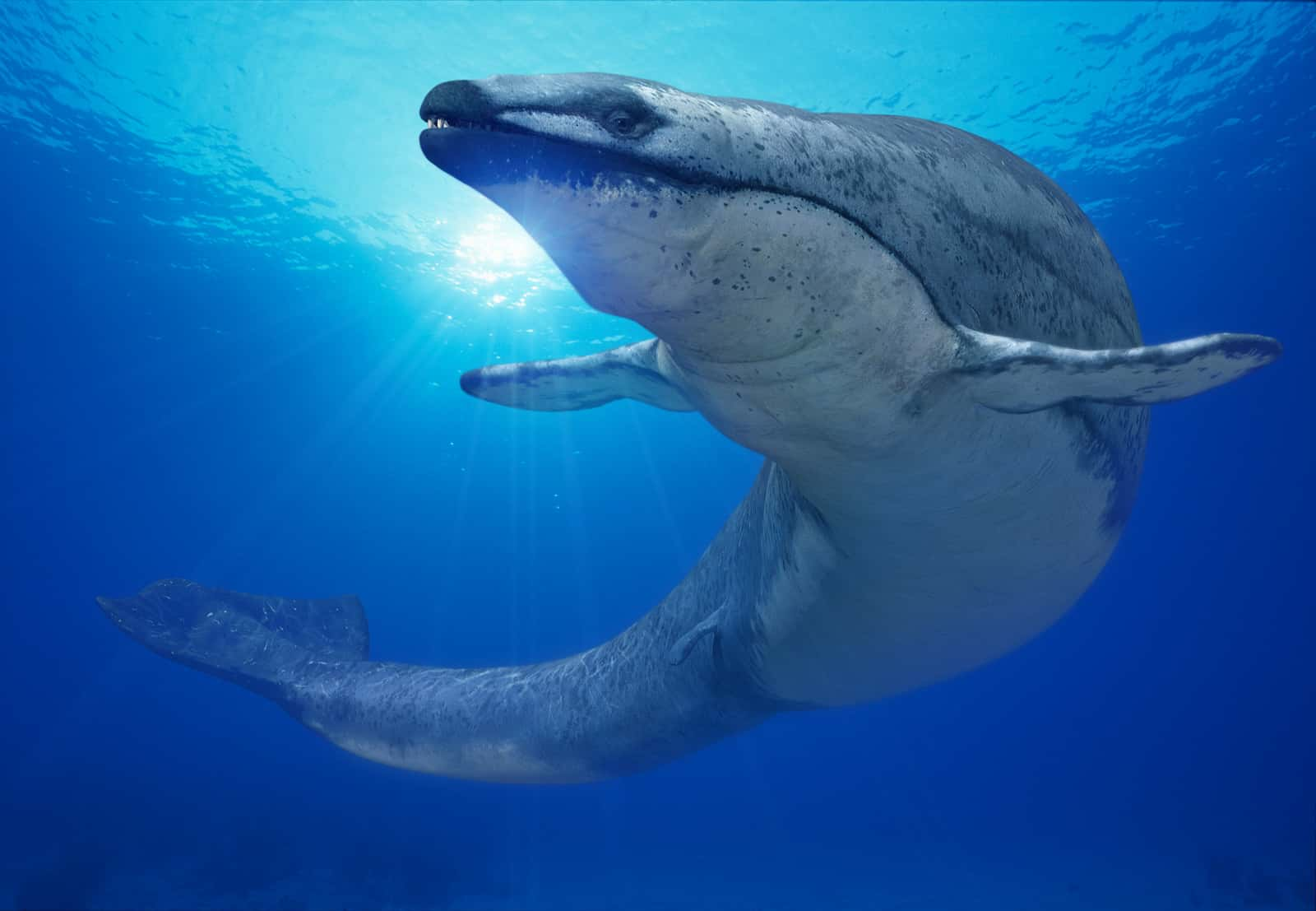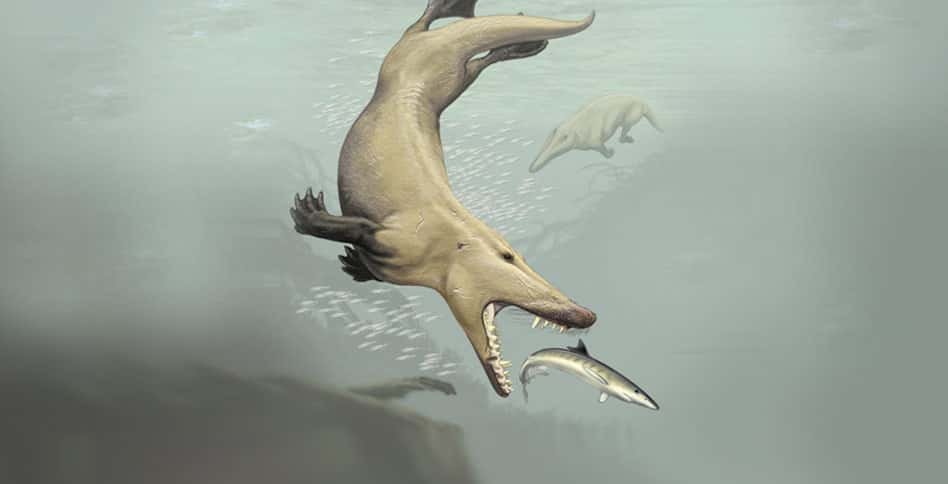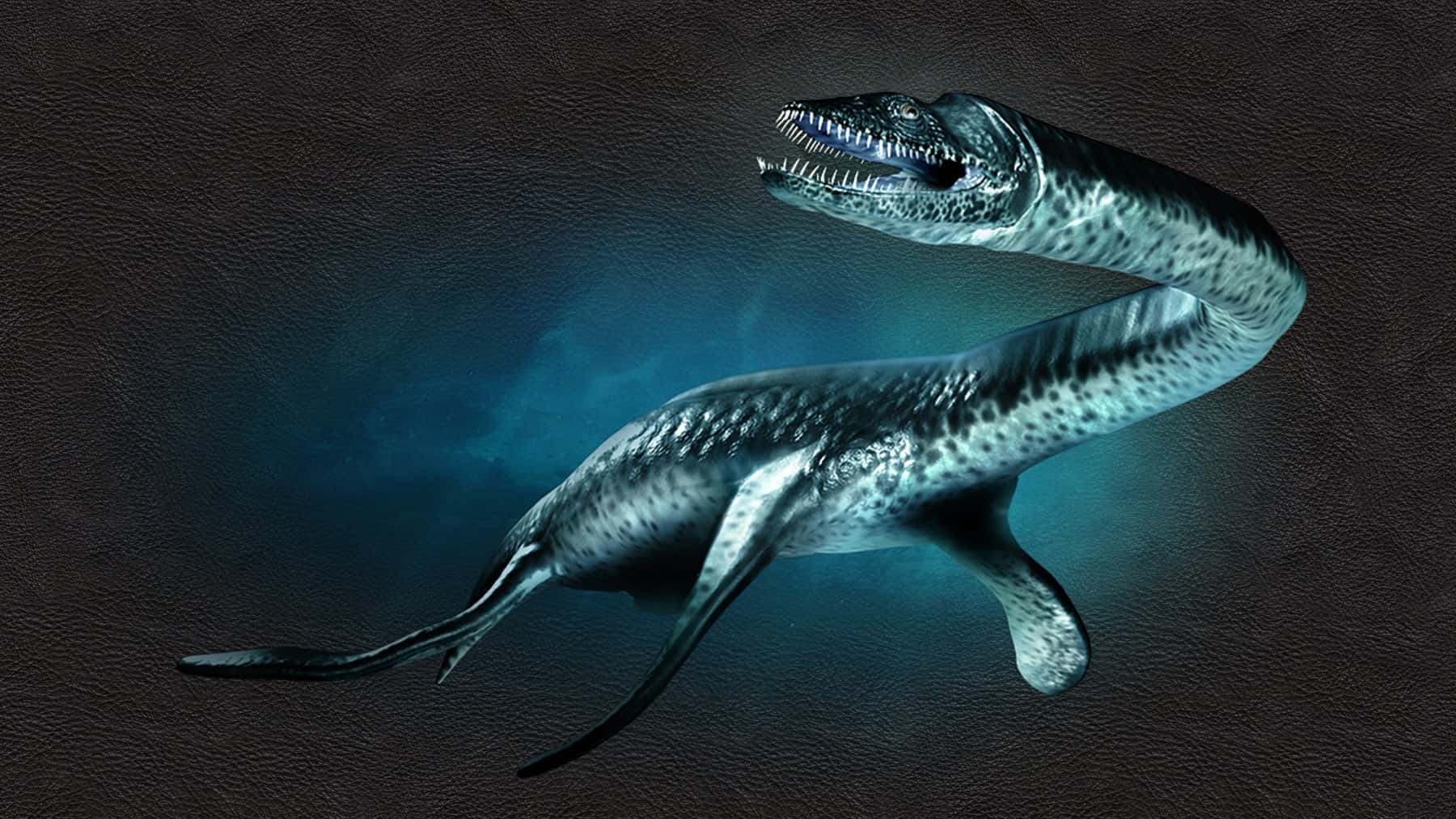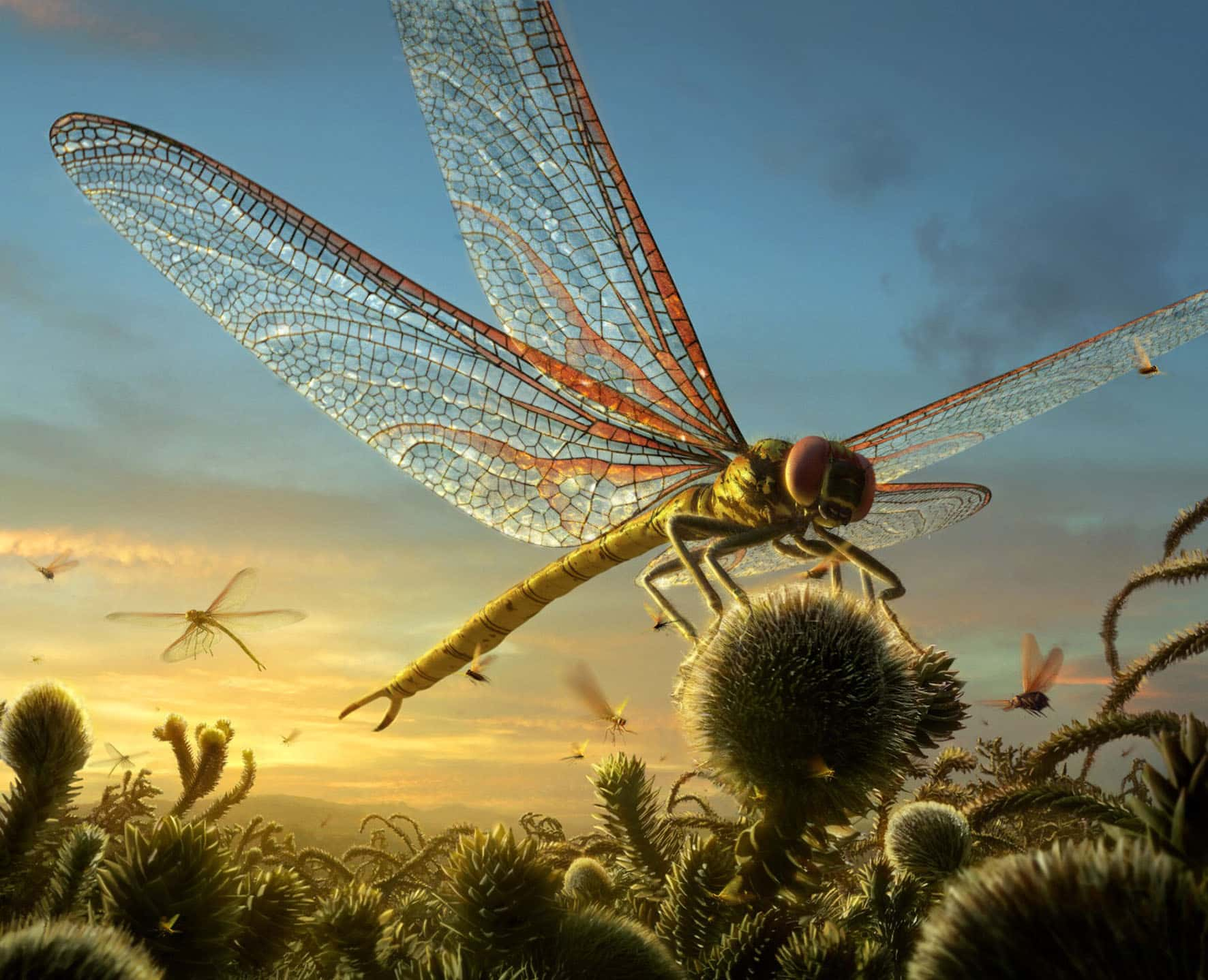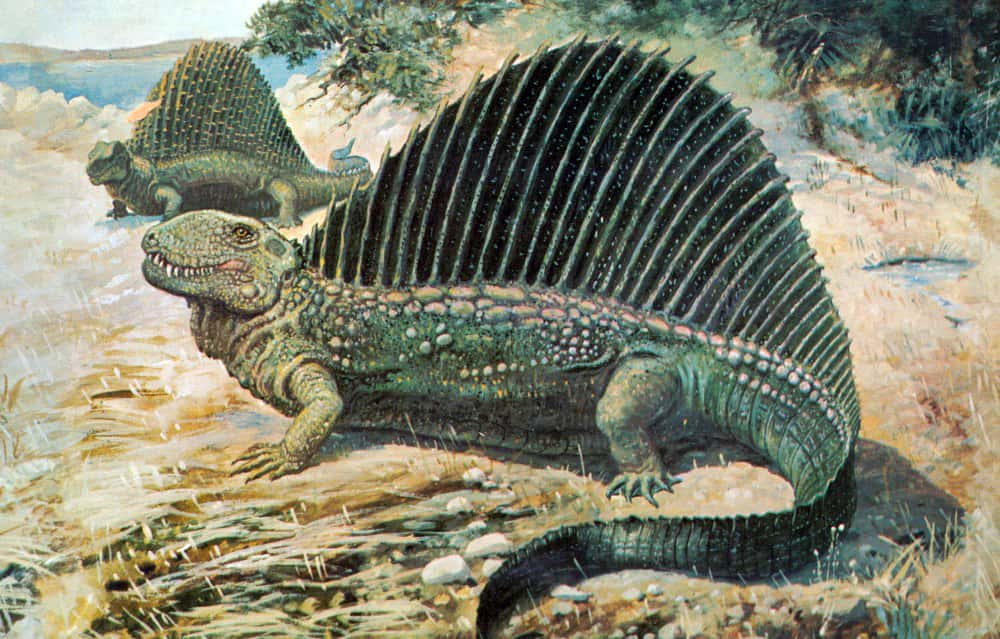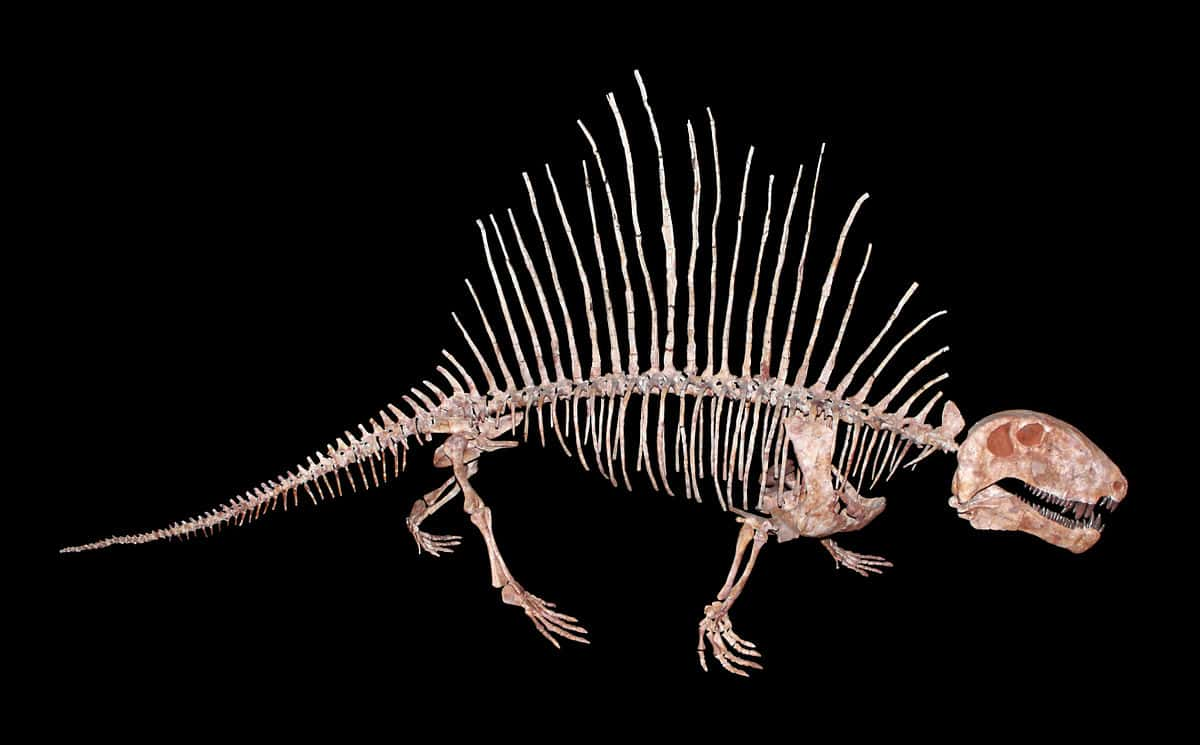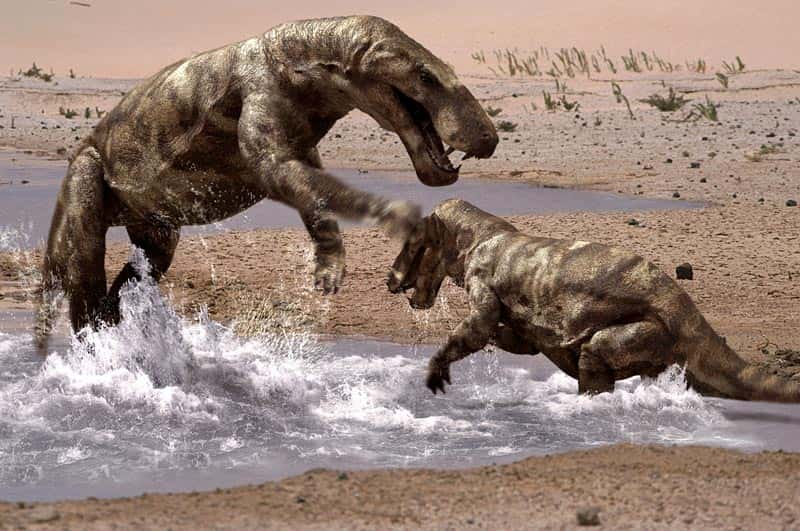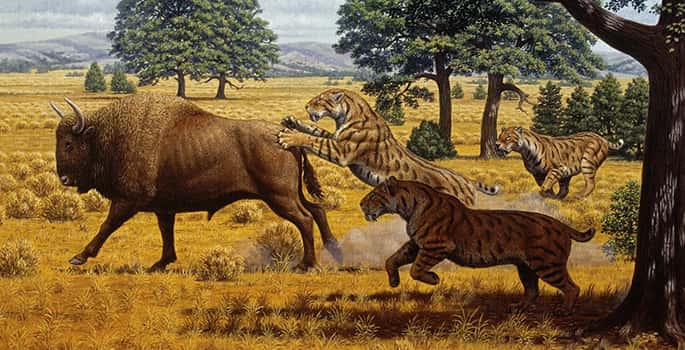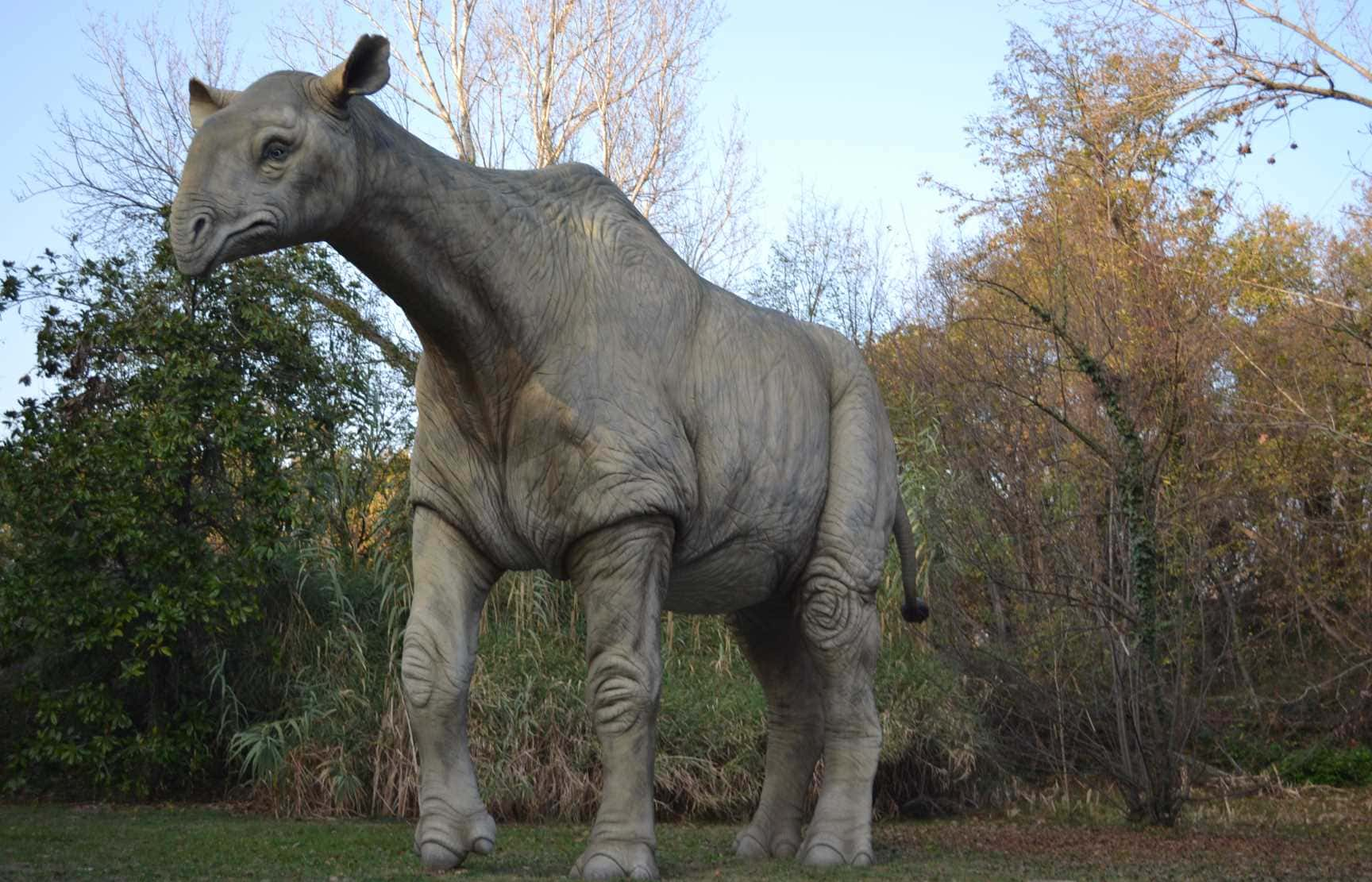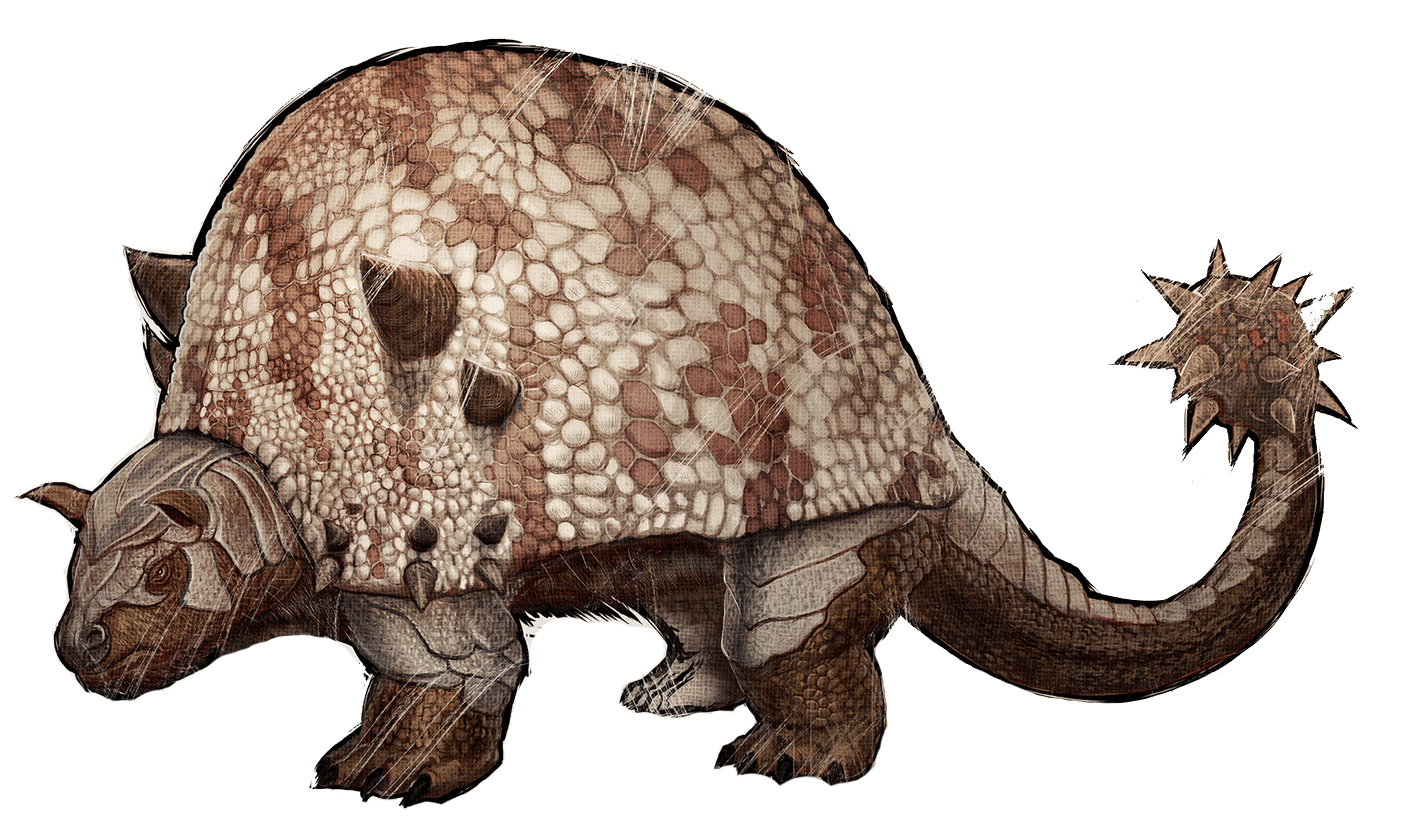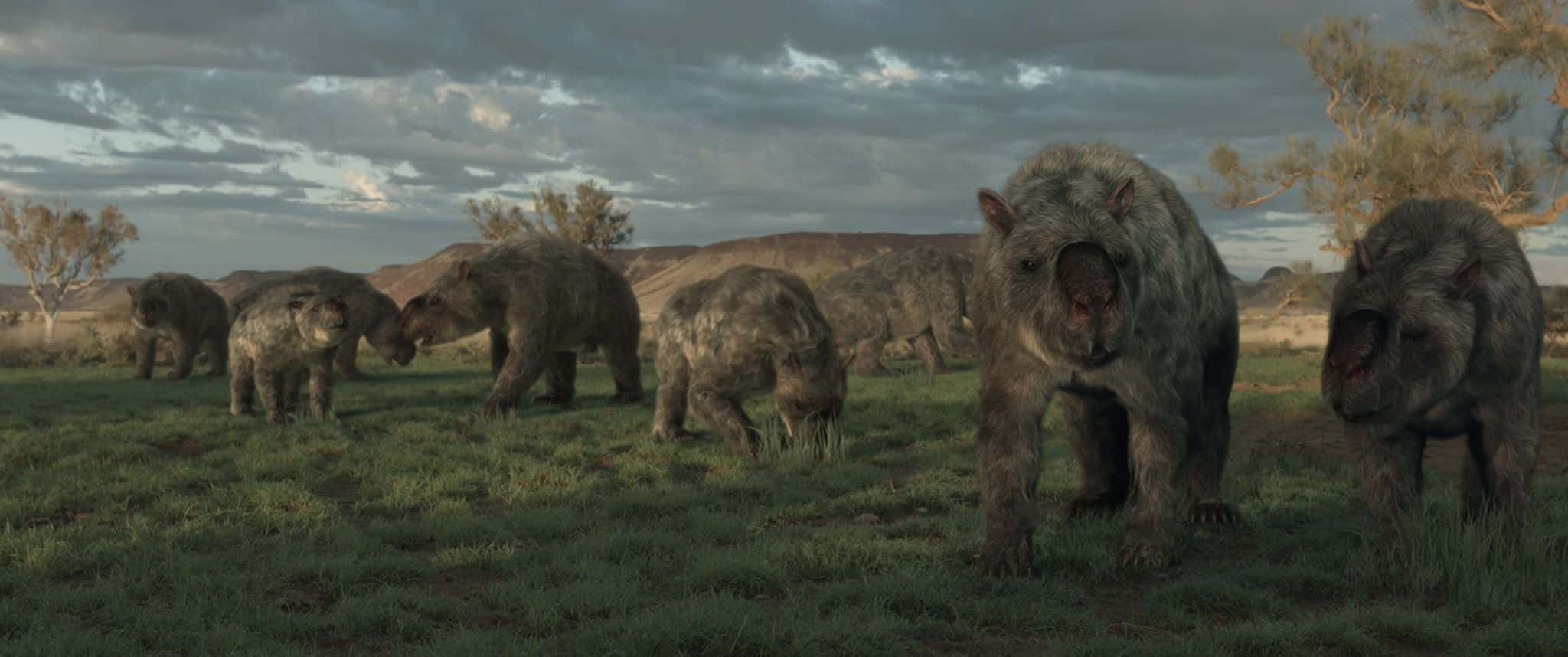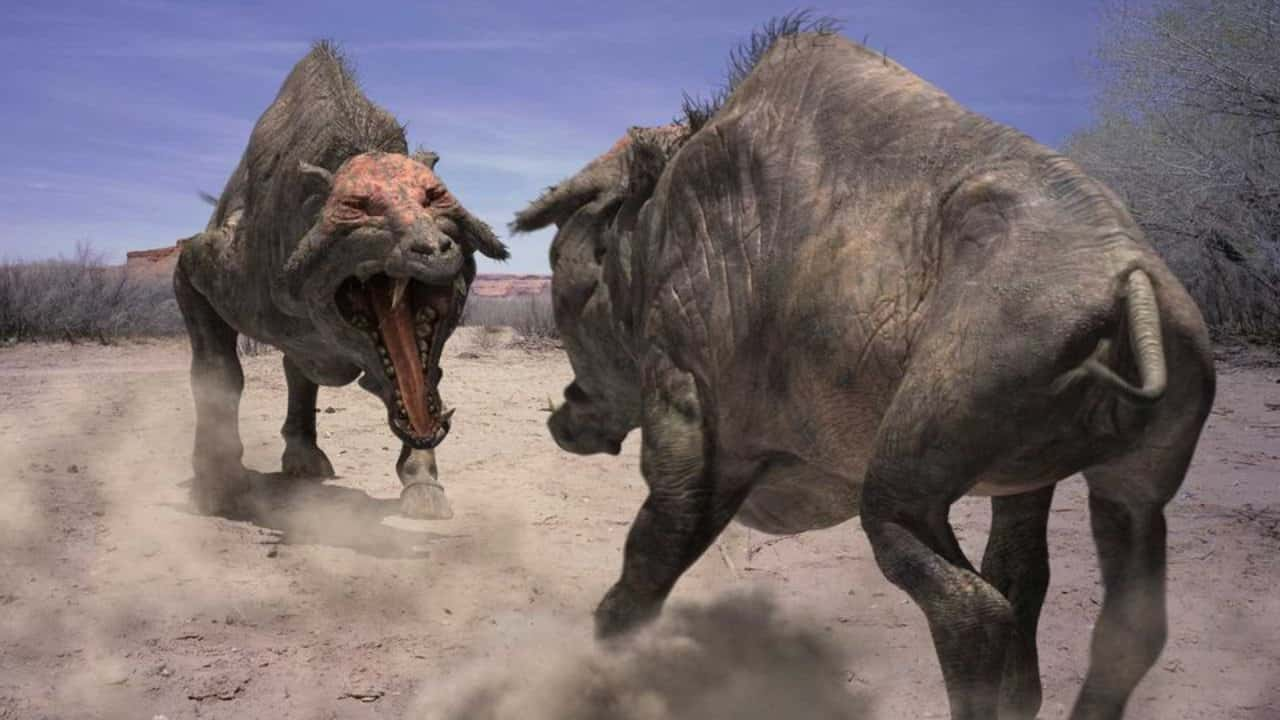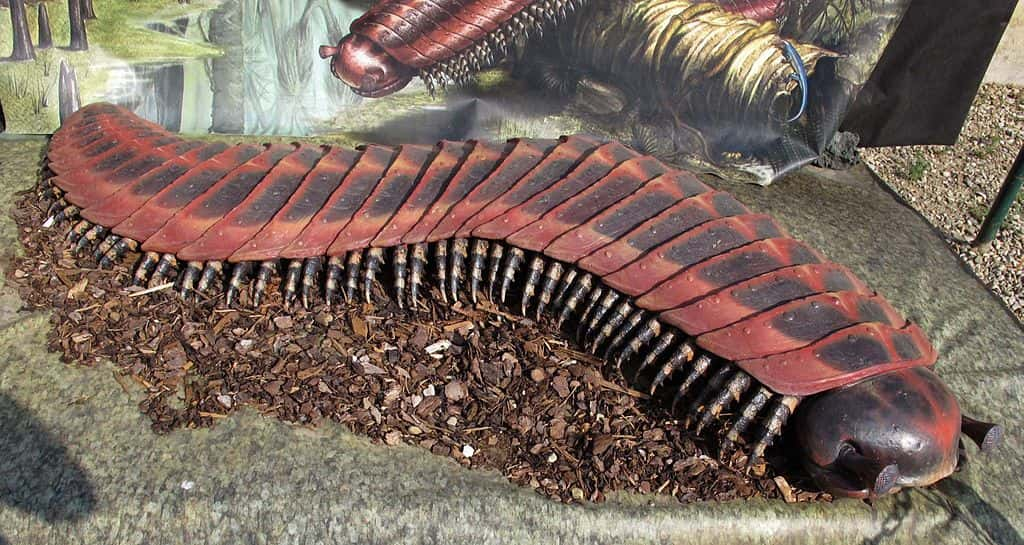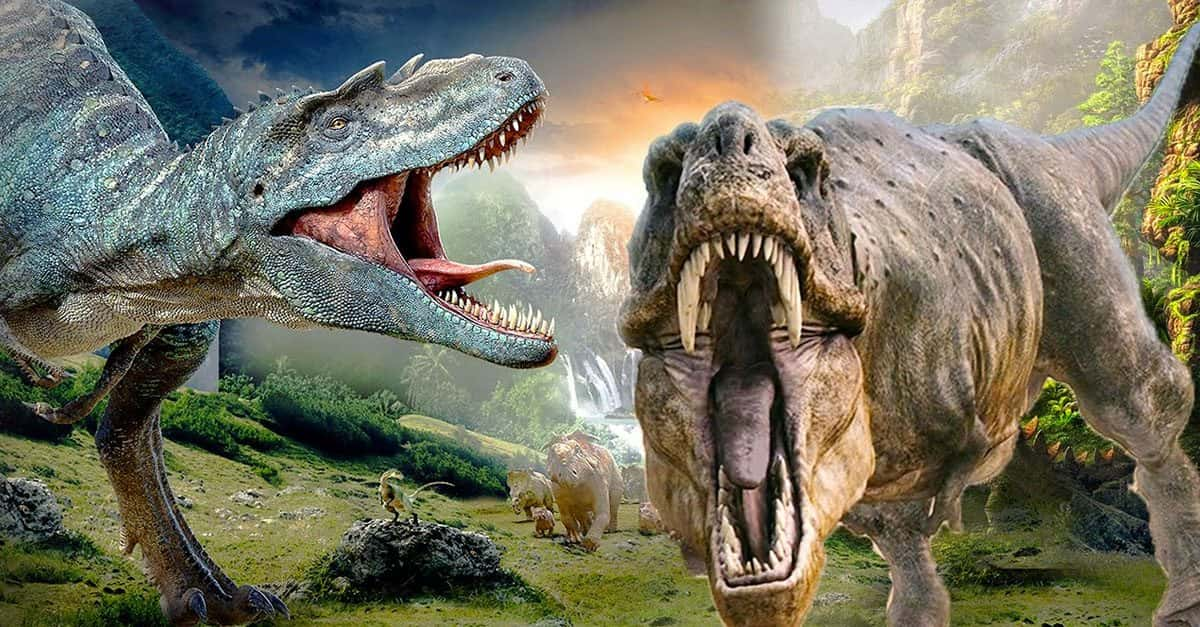We all know that the enormous, terrifying dinosaurs once roamed the Earth, but that doesn't mean that they were the only fearsome prehistoric beasts to have ever existed. There are countless other examples of extinct megafauna (large or giant animals) that rival the dinos in size and ferocity, but don't get the same recognition. That changes today! Here are 43 facts about some of the most astonishing, and under-appreciated, creatures to have ever roamed this planet's plains, forests, and seas.
43. Growth Spurt
While mammals had existed for millions of years as tiny creatures hiding in the shadows of the dinosaurs, they got their chance to evolve and grow after the dinos' extinction, 65 million years ago, in a period was called the Paleogene. It spanned 43 million years of Earth’s history and it's generally divided into three epochs: the Paleocene, Eocene, Oligocene.
42. The Paleocene
If the near-total extinction of the dinosaurs at the end of the Cretaceous Period was the blowout graduation party, then the Paleocene was the hangover morning right after. The Paleocene lasted from about 66 to 56 million years ago, during which the planet experienced a dry spell as life slowly recovered from the devastation. This was a world of a world of little creatures, be they mammals, reptiles, or insects, as the extinction event had killed off every large beast on Earth. Eventually, life recovered, and the first group of animals to truly recover and thrive were the only dinosaurs that survived the extinction: the birds.
41. Big Bird
Birds were the first creatures to fill the void left behind by the dinosaurs. They didn’t just grow large, they sat at the top of the food chain for millions of years. One of the largest birds in this era was Gastornis, which grew to be two meters tall and lived through the Paleocene all the way into the Eocene. While it was initially considered to be a fierce killer, Gastornis seems to have been more omnivorous, or even herbivorous, favoring plants over meat.
40. My Little Pony
One of the small mammals that would have had to flee from birds like Gastornis was the Propalaeotherium. While it might have looked a bit like a shrunken tapir, it was actually an early ancestor of the horse. Thanks to some very well-preserved fossils, we know that instead of complete hooves, Propalaeotherium had hoof-like toes instead. No word on whether they could perform magic spells, however.
39. G’Day Mate!
Based on recent discoveries, the Paleocene epoch was a time of many mammal origin stories. One group that emerged around this time was the marsupials. We know them today as the group that include koalas, Tasmanian devils, opossums and kangaroos.
38. Run, Samuel L. Jackson, Run
The largest snake species ever discovered was found to have lived in the late Paleocene. It's estimated that the epicly named Titanoboa was a staggering 40 feet long and weighed 2,500 pounds. Titanoboa’s size has led scientists to suspect that it spent much of its time in the water, as getting around on land fast enough to catch prey would have been immensely difficult with all that bulk to carry around.
37. The Eocene
Coming right after the Paleocene, the Eocene lasted from 56 to 33 million years ago. It oversaw a period of hot temperatures worldwide, with lush rainforest on every continent. However, in the latter half of the period, things changed dramatically as Antarctica froze for the first time ever, changing ocean currents and weather patterns radically. The end of the Eocene witnessed another mass extinction which, while not quite as bad as the event that killed the dinosaurs, still saw the end of 20% of all living things on the planet.
36. Little Community
Strangely, the Eocene was found to have been initially populated with small mammals. Most of them never got no heavier than 10 kg, and it was only later on in the Eocene, as the world got cooler, did they get bigger. Mammals were even smaller at the start of the Eocene than they were during the Paleocene. Scientists are still working on why that was the case.
35. Well, This Picnic is Ruined
The largest species of ant ever discovered has been found in both Wyoming and Germany, meaning it must have had an enormous range. It’s been called the Titanomyrma (I'm seeing a naming trend already), and the queen ants of this species were as big as hummingbirds. Nope. Nope, Nope Nope.
34. Eat Your Heart Out, Hitchcock
While birds were supplanted by mammals just an epoch and a half after the dinosaurs died out, one place on Earth saw the rise of what have become known as the "terror birds." Known by the scientific name Phorusrhacidae, these large birds stood as high as ten feet tall and ruled supreme as the top predators on the isolated continent of South America for tens of millions of years. Gotta admit, I come face to face with a ten foot tall bird, "terror bird" is probably the name that would come to mind.
33. Nothing Sarcastic About You
During the Eocene, as herbivores got bigger, so did the predators that hunted them. The now-extinct order of mammals called the creodonts was the first group of mammals that we know for certain were carnivores. The largest creodont was called Sarkastodon—seriously, I mean it! Living in present-day Mongolia alongside the huge plant-eaters that it preyed upon, it's estimated that Sarkastodon weighed nearly 1,800 pounds—the weight of an American buffalo.
32. Monkeying Around
The Eocene saw the emergence of primates for the first time in Earth’s history. One of the earliest examples was Godinotia, which was an early monkey no bigger than a housecat. It lived in Germany, when that part of the world was covered in tropical rainforest. From such humble origins...
31. Return to the Water
Mammals spread across the land during the Eocene, even venturing into the rivers and oceans of the world to replace the marine reptiles which had been wiped out with the dinosaurs. One of the early examples was a creature named Prorastomus. It lived mostly on land, but it's been shown to be a primitive sirenian, a group that still exists today as manatees and dugongs.
30. Wolves on Hooves
The mesonychids were a group of carnivorous mammals that thrived in the Eocene and died out with the epoch’s conclusion. While these fearsome creatures looked very similar to today's wolves and hyenas, they actually had hoof-like toes on their feet and they're more closely related to modern-day pigs, cows and deer than they are to any modern carnivores.
29. The Oligocene
After the Eocene, the epoch which spanned from 33.9 to 23 million years ago is known as the Oligocene. This epoch was defined by even colder temperatures and more open landscapes, as grasslands began to make their first real appearance on the planet. This meant animals got bigger, especially the mammals.
28. Earth Nearly Wiped Out
Most people know about the huge extinction event which meant we would never live to see dinosaurs, but long before dinosaurs even showed up, there was an even bigger extinction event which nearly destroyed all life on Earth. This event, which happened between the Permean and Triassic Periods (252 million years ago), wiped out a total of 96% of life on the planet! It’s the only known time where things got so bad, insects were also part of the extinction event. When even the cockroaches are struggling to make it, you know things are bad. Thankfully, it wasn’t actually the end for life on Earth, and new creatures eventually evolved to repopulate it.
27. Yeah, No Thanks, Just No
Around 300 million years ago, a giant, spider-like creature roved the Earth's oceans. This horror was known as Megarachne, and it had a body that was nearly two feet long. We reckon that most of you have already stopped reading, so we’ll leave it at that.
26. I’m No Reptile, Mate!
When the first fossils of Basilosaurus were discovered, they were assumed to be part of a massive, terrifying marine reptile. It wasn’t until years later that they were identified as belonging to a large, carnivorous whale which lived between 40 and 35 million years ago. Due to rules about naming things, though, Basilosaurus still holds onto its reptilian name ("saurus" comes from the Greek sauros, meaning lizard).
25. Elephants in South America?
Found in Argentina and Bolivia, the Pyrotherium was an ancient ungulate (hooved animal) that lived in the Oligocene epoch. Nearly ten feet long and five feet tall, it was built like a large rhino or hippo, except that it had four small tusks jutting forward out of its mouth. This has led many people to suspect it was some kind of relative to modern-day elephants, though the similarities seem to be just a coincidence. Another fun fact? Pyrotherium actually means "fire beast." Not because it shot fire or anything, but because it was first found in a deposit of volcanic ash. We can still dream though...
24. Steve Irwin Wouldn’t be Interested in This One
During the Eocene, Ambulocetus was an important link between modern-day whales and their landlocked ancestors. With a name that means "walking whale," Ambulocetus was a marine mammal that likely lived on the land but hunted in the water. While it looked like and may have hunted like a crocodile, it seems to have swum like its whale descendants, by flexing its body up and down rather than side to side.
23. Marine Cousins
Many people think that the enormous, aquatic plesiosaurs were dinosaurs, but they were actually an unrelated type of reptile that became adapted to life in the water. These creatures lived for millions of years and some species may have reached as big as 50 feet!
22. Before the Dinosaurs
Life had been evolving creatures for billions of years before the dinosaurs ever arrived in the Triassic Period. Eons before the giant reptiles ruled, it was the insects and other arthropods that dominated the landscape, some reaching enormous proportions. One type of dragonfly that lived around 300 million years ago, Meganeura, had a wingspan that was more than two feet across! I can only imagine the sound that must have made.
21. Synapsids
As reptiles evolved across millions and millions of years, a group of them began to take on different characteristics. These became known as the synapsids, or to use a more common term, mammal-like reptiles. While these creatures looked quite similar to reptiles at first, they were actually the ancestors of mammals like you and me. Meanwhile, the rest of the reptiles, known as the sauropsids, continued to evolve, including the branch that would become dinosaurs.
20. Come Sail Away
A type of synapsid called Dimetrodon, that lived in the early Permian Period (between 295-272 million years ago), developed huge sails on their backs. It's not known exactly what these sails were for, exactly, but some theories include that they were used in courtship displays, or that they were used to help the animals warm up more quickly in the sunlight.
19. Fabulous Fangs
One thing that we do know about Dimetrodon, however, is that it was the most fearsome of the sail-backed synapsids. It walked on all fours, was around 15 feet long, and ate whatever it could catch, growing huge, serrated teeth to better subdue and devour its prey.
18. Hold My Prehistoric Beer
It seems like later synapsids did everything they could to try and one-up the fearsome Dimetrodon. The prime example of these top predators was the Gorgonops (yet another entry in the long list of ancient animals with bad-ass names). This beast stood six to ten feet in length and had teeth so large that they stuck out over its lower jaw, akin to the saber-toothed tiger. It lived 260 million years ago, but, despite what I'm sure we'd all like to imagine, it died out long before it would have had the chance to go toe-to-toe with the dinosaurs.
17. My Teeth Are Like Swords!
Contrary to the common term (one that we just used), there’s never been a saber-toothed tiger. There were actually several species of saber-toothed cats, but none of them were tigers. They were found worldwide and existed, in one form or another, from 42 million years ago up to as recently as 10,000 years ago. The most famous of these was Smilodon, which has been represented in fiction (the Ice Age franchise) and non-fiction (Walking with Beasts), and is probably what most people think of when someone says "saber-toothed tiger."
16. Those Vultures Sure Look Happy to See Us…
A major downside to these saber teeth was the fact that they were very fragile, and so the cats had to pin struggling prey to the ground before they could use their teeth to kill their prey, else they might accidentally break off their fearsome chompers. Also, they would only be able to eat the fleshiest parts of a body, avoiding the bones that they wouldn't have been able to bite through. This would have been a goldmine for scavengers who didn’t have oversized teeth getting in their way constantly.
15. Holy Killer Croc, Batman!
It’s one thing to be a giant, terrifying lizard, but quite another to live alongside the dinosaurs and hold your own. Such was the case with Sarcosuchus, was was essentially a massive, ancient crocodile. At 40 feet, it was nearly twice as big as the biggest crocs of the modern era, and it weighed about eight tons. Try turning that creature into a handbag, or ten, or 1,000.
14. I’ll Never Eat Lobster Again
Around 420 million years ago, the ocean was witness to armored arthropods (crustaceans and insects are modern examples of arthropods) which grew to huge sizes. The pterygotus were one type of these armored critters, and they appeared in a whole range of sizes. The largest, the Pterygotus grandidentatus, discovered in England, was a record 5 feet 8 inches long. Have I said "nope" yet? Because if so, I'm saying it again.
13. Enjoy it While it Lasts
In the immediate aftermath of the Permean extinction, the most common creature on the planet—and possibly the most successful animal of all time—was Lystrosaurus. While it sounds like it would be a dinosaur, Lystrosaurus was actually an ancestor of mammals. It ranged from about the size of a guinea pig to the size of a... regular pig, and was descended from burrowing animals. It's believed that at one point, Lystrosaurus made up 95% of all terrestrial vertebrates. This is a record of success that has not been achieved before or since, unless the human race decides to one-up them, and based on the way we're headed, who knows... I for one hope that Lystrosaurus keeps it's place at the top of that list for a long time to come.
12. No Horns About It
The largest land mammal to have ever existed was the Paraceratherium. Related to modern rhinoceros, it lived during the Oligocene epoch. It was estimated to weigh almost 44,000 pounds, stand nearly 16 feet tall at the shoulder, and carry a skull which was almost 4.5 feet long. This massive animal was a herbivore, and its remains have been found across the Eurasian continent, because really, who’s going to stop something that big from going where it wants to go?
11. Don’t be Glib About Glyptodonts!
Because of South America’s long isolation from the other continents, a variety of strange creatures evolved there, undisturbed for millions of years. One group of these animals were the glyptodonts. Ancient relatives of the armadillo, these grew to huge sizes in the prehistoric ages. The biggest was Doedicurus, standing at 5 feet tall and weighing over 2,300 pounds. Basically, picture a Volkswagen Beetle and you're pretty much picturing Doedicurus.
10. Jump on That Bandwagon!
You've heard of the woolly mammoth, but how about the woolly rhinoceros? These huge animals lived alongside the mammoths and were also adapted for the cold, thriving across Europe and Asia. They only died out 11,000 years ago, recently enough that they lived alongside humans, and they actually appear in cave paintings done by our ancestors.
9. A Beard of Bone
For millions of years, up until the start of the early Pleistocene epoch, there was a relative of the elephant known as the Deinotherium. These huge animals stood up to 13 feet tall at the shoulder, but unlike today's pachyderms, they didn’t have traditional elephant tusks. Instead, they had two short tusks which curved strangely downwards. Unfortunately, the Abe Lincoln impersonation was forever incomplete without the top hat to go with it.
8. That’s a Long Franchise!!
What's commonly referred to as the Ice Age actually lasted millions of years, off-and-on. The ice came and went in periods of glaciation, causing huge sheets of ice to build up—they were nearly 10,000 feet thick in certain parts of the world. What we think of as the "Ice Age" today was part of the Pleistocene epoch, which lasted from around 2.5 million years ago to 11,700 years ago.
7. You Call That a Marsupial? This is a Marsupial!
During the Pleistocene, the continent of Australia produced Diprotodon. Weighing in at over 6,000 pounds, it was the largest marsupial that’s ever been discovered. Diprotodon was a huge herbivore, living in woodlands and grasslands alike. Its closest relatives today are wombats, who would no doubt have worshipped this creature as a god if they saw it today. I know I would!
6. Why the Short Face?
Despite being named for the fact that their snouts were not as long as most others of their kind, the short-faced bear was big enough to look you in the eye, and that was just on all fours. Standing on two, the short-faced bear could stand up to 12 feet tall!
5. The Mighty, Mysterious Mammoth
The woolly mammoth is the most recognizable prehistoric beast that isn't a dinosaur. These cousins to the elephant were built to survive the Ice Ages, weighed up to 12 tons, and only died out about 4,500 years ago (to put it into perspective, the Great Pyramid of Giza existed at the same time as the last wooly mammoths). Why exactly they disappeared remains a topic of fierce debate. Since they lived alongside humans, scientists have suggested that they were among the first species to become extinct due to over-hunting by man. Others pointed to the rapidly changing climate after the Ice Age, which saw temperatures rise and much of the grassland that supported the mammoth being overtaken by forest.
4. Big Tooth, Indeed
When it comes to the biggest shark that ever lived, scientists have only ever found its teeth. But these seven-inch-long teeth could only have belonged to Megalodon. It's estimated that this nightmarish monster would have reached 60 feet long, meaning a T-rex’s head would have fit inside its mouth. Because it died out more than two million years ago, and no full skeleton has ever been found (the skeletons of sharks are made of cartilage, which doesn't fossilize well), we can only make guesses based on what little we do have. But while we might not have much hard evidence, at least we're sure to have monster movies made about this goliath shark from now till the end of time.
3. Call Me Lazy, I Dare You!
If there was ever an animal that deserved to have the word "mega" in its name, it was the Megatherium, a giant ground sloth which lived in South America, but then moved into North America after a land bridge united the two continents. It’s estimated to have been six meters tall and heavier than an elephant. Its sharp claws, coupled with the fact that it could walk on both four and two legs, meant that Megatherium was a dangerous animal. Scientists aren’t sure if it was an omnivore or a herbivore, though it’s safe to say that either way, it was not to be messed with.
2. They Call Me MISTER PIG!
The Oligocene featured a group of animals known as the entelodonts, which are sometimes called "hell pigs" or "terminator pigs." These animals looked like hogs, but were actually related to the hippopotamus. Archaeotherium was one particularly frightening example: It was a carnivore the size of a cow from North American, and it looked like a giant warthog. It's teeth marks have been found in the bones of other massive animals like rhinos.
1. Count the Legs. Try it!
300 million years ago, the planet had an unusually high oxygen content in its atmosphere. This allowed insects and other arthropods to get bigger than they’ve ever been, before or since. The biggest one yet to be discovered is Arthropleura. It looked a lot like modern millipedes—not so scary, right? Oh, did I mention it was eight feet long?
Sources: 1, 2, 3, 4, 5, 6, 7, 8, 9, 10, 11, 12, 13, 14, 15, 16, 17, 18, 19, 20, 21, 22, 23, 24, 25, 26, 27, 28, 29, 30, 31, 32, 33, 34, 35, 36, 37, 38, 39, 40, 41, 42, 43

